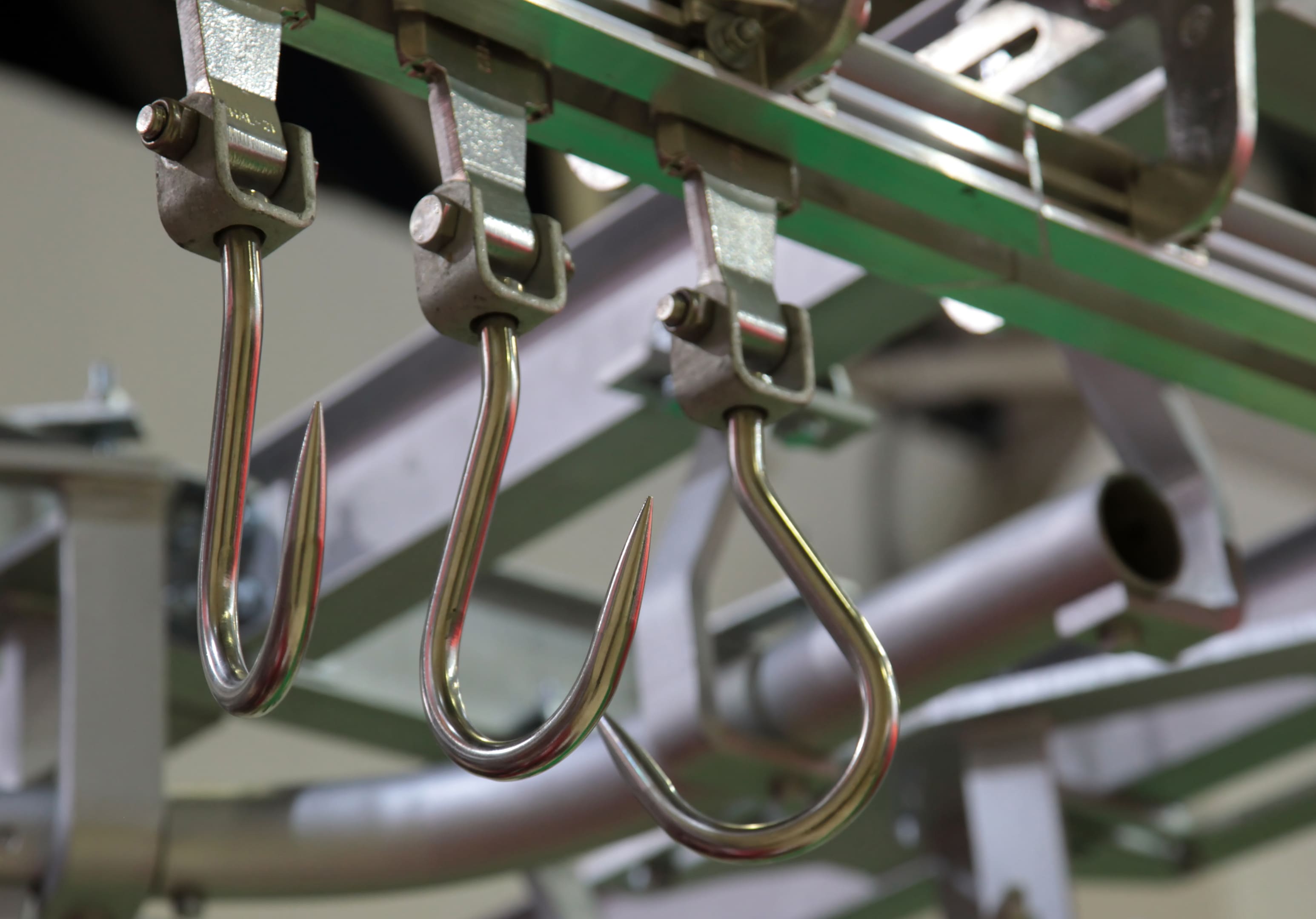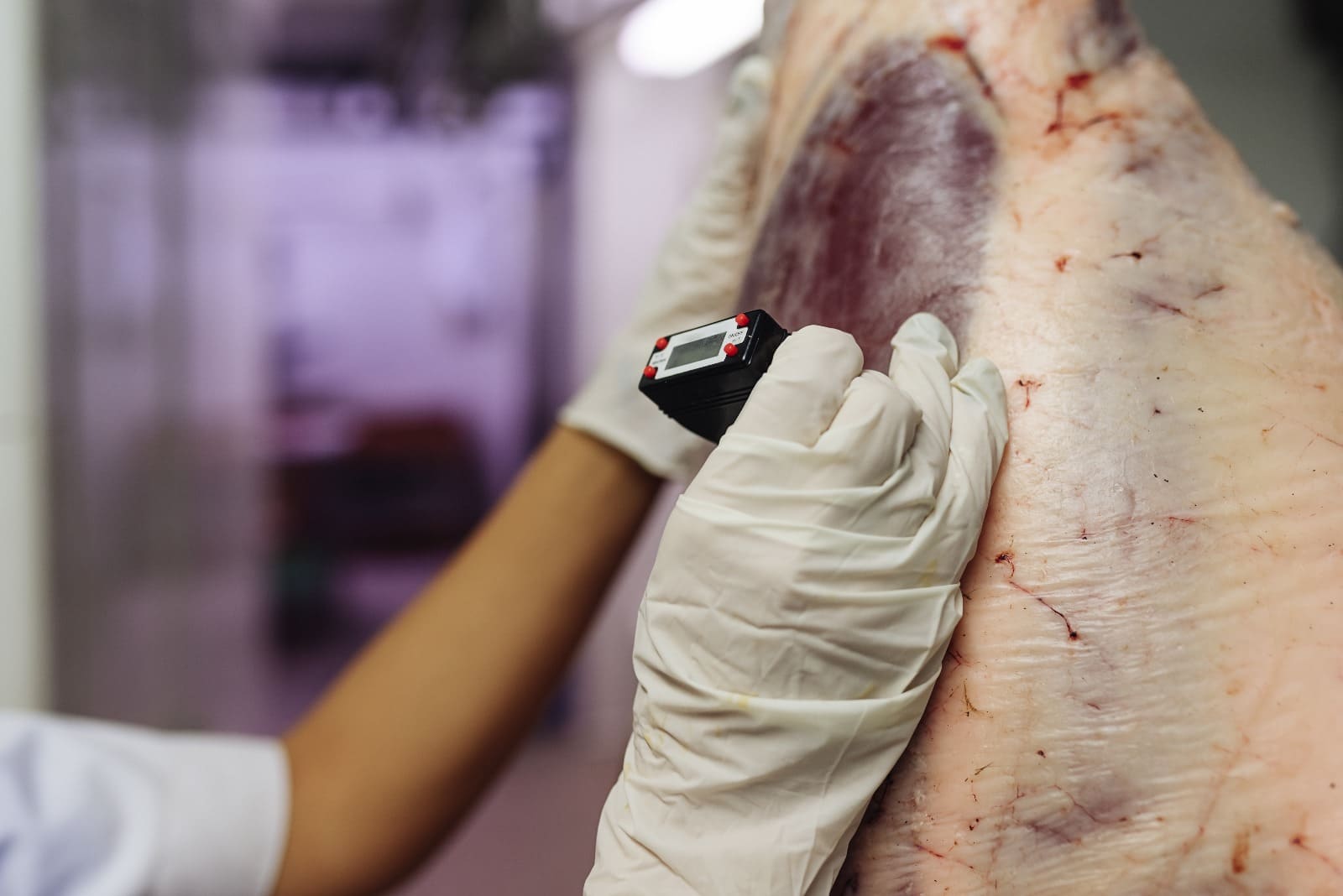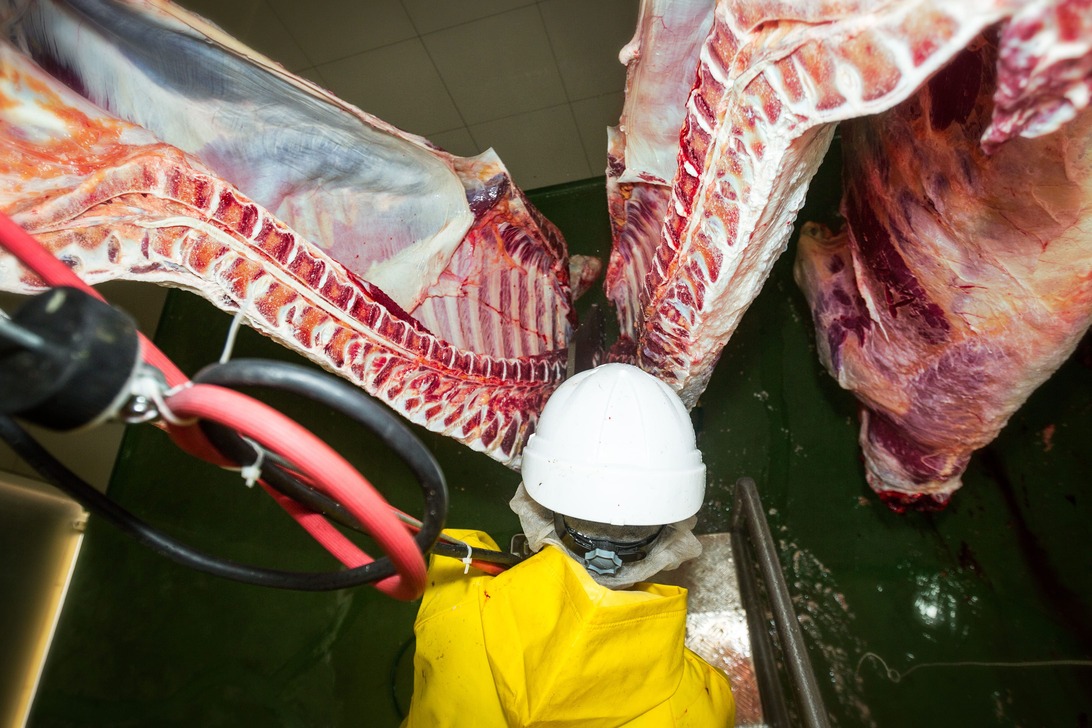Slaughterhouse Management

Slaughterhouse Entry
The process of admitting animals to the slaughterhouse is facilitated through the use of RFID tags or manual input of identification details. Upon entry, carcasses are methodically arranged in a sequential order.

Labeling
Within the queue of carcasses, labeling can be conducted at various stages, providing a highly efficient tracking mechanism. Production labels can also be generated for accompanying offal and body parts, allowing for both individual and lot-based traceability options as needed. This adaptability extends to the labeling process itself. Starting from the cattle hoof cutting station, where both halves for cattle or quarters/group labels for sheep can be affixed according to your preference. If our proprietary Intelli Hook system is implemented, comprehensive tracking can be achieved through RFID tags attached to processing hooks, eliminating the need for additional labeling.

Post-Mortem Examination
With the dedicated Post-Mortem Examination module, veterinary inspections take place subsequent to slaughter. Following essential checks, problematic carcasses and organs can be identified and marked, enabling subsequent actions like disposal or conditional processing to be managed.

Halving and Weighing
The system allows for the recording of cattle quartering and the singular or gambrel-based weighing of sheep. This includes the creation of labeled groups as specified. Previously generated carcass labels can be conveniently scanned for entry into the system during this stage. In later steps, tags lacking weight information can be rescanned to acquire accurate weight data. Meatsys, distinguished by its exceptional flexibility and personalized adaptability, seamlessly integrates into your workflow at every stage. Any modifications that may arise can be swiftly incorporated into the system, ensuring a smooth transition to the new process.

Classification and Quality
The classification module within Meatsys accommodates the classification of carcasses under the EUROP system or tailored classifications. Vetident's developed Meatstation device automatically records vital carcass characteristics such as meat color, marbling, temperature fluctuations during pre-cooling, and pH levels, through either automated or manual data entry. The patented Carcass Recorder system, also a creation of Vetident, facilitates three-dimensional scanning of carcasses, proactively identifying potential issues and recording them for future reference. This system can also enable automated classification processes shortly after implementation.

Yield and Payments
According to a formulation created by you, carcass classification, weight, measurement values, and veterinary examination results are used to generate producer payment reports. These reports include details such as carcass classification, weight, and any issues present in both the carcass and its by-products. Customers utilizing the Carcass Recorder device can incorporate images, measurements, and automated classification data of the carcass into this document, producing a comprehensive payment breakdown to present to producers. This approach ensures a standardized foundation for retrospective traceability and accurate calculation of producer payments, enhancing transparency and precision in the payment process.

Quartering
At the Quartering Processing Station, the re-weighing and re-labeling of quartered carcasses are performed, along with additional measurements using the MeatStation device. This comprehensive process allows for the shipment, further segmentation, or transfer to storage of the carcasses, taking into account the gathered MeatStation measurements.